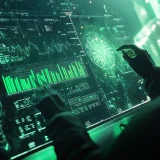Computer History: Let’s take a look at this timeline
Trivia question, : Could you draw a line with the most important historical events in computer science? Certainly not! because we all know that Trivial Pursuit doesn’t have any questions about computer history among its old categories of questions, so this question would come from an GCSE teacher or a boring friend.
In any case, either to astonish our teacher or to silence our friend, we must know the answer.
- In 1834, Charles Babbage announces the analysis engine
- 1943: The birth of Mark I Colossus
- 1954: First prototype of desktop calculators
- 1969: The creation of ARPANET
- 1971: The first e-mail is sent
- 1981: IBM launches a PC
- 1990: Tim Berners-Lee writes the first website
- 1997: The machine defeats the man, in chess
- 1998: Google was founded
- 2018: You get to meet Pandora FMS
Computer History
Our journey begins here. Let’s go back in time to learn about computer history
In 1834, Charles Babbage announces the analysis engine
Unbelievable, did you think that the furthest we could go back in time in terms of computing was the 1980s, right? Not at all. British mathematics teacher Charles Babbage woke up one morning to start creating the analytical machine! A modern general-purpose computer that was a major breakthrough in the history of computer science.
Its general purpose was a machine that could be programmed by the user, capable of executing the desired instructions and commands. It was mechanical in nature, and already had many parts of a modern computer. It could store 1000 numbers of 50 digits each, and although it could never be built by its inventor, Babbage, because the necessary technology was not yet available, it was one of the first milestones of computer science.
1943: The birth of Mark I Colossus
More than 70 years ago, this top secret project arrived and helped to win a war. It sounds like a science fiction story, doesn’t it? The Colossus machines were the first electronic calculating devices. They were used by the British to read German encrypted communications during World War II. This means that the Colossus, originally designed by Tommy Flowers, was one of the first digital computers.
1954: First prototype of desktop calculators
As a former student I can say that calculators have saved my exams on more than one occasion, not only by learning how to spell the word “pocket” with numbers on its small screen, by giving me hours of fun while others were doing the written test, but also because they helped me hide a lot of cheat sheets on its back and cover.
Back in 1954, IBM presented the world’s first electronic calculator in the United States, made with transistors, something highly revolutionary and technological for the time. It was quite large and could cost around $80,000. But, after a short time, more commercial models were launched, which thanks to the development were more reliable and affordable.
1969: The creation of ARPANET
ARPANET was just a small network of computers that was created on behalf of the United States Department of Defense. They did so as a way of communication for the various agencies in the country. We are witnessing the seminal net that would become what we now know as the Internet. In 1990, ARPANET ended its existence.
1971: The first e-mail is sent
The first e-mail was sent by Ray Tomlinson. What kind of verse did he put for posterity? Well, nothing more and nothing less than the first few letters of the computer keyboard. An indecipherable text without much meaning.
As a curiosity, he used for the first time the @ symbol between the user name and the machine. This fact is now a thing of the past, as you can imagine. He chose this symbol because, he explained, “it certainly wasn’t in a real name”.
Ray’s heart must have been broken because he received no response…. The innovation was so innovative that since it was the only program installed, there was no opportunity for dialogue.
1981: IBM launches a PC
IBM achieved a milestone in the history of humanity in general and of computing in particular: with the commercialization of the personal computer, or PC, it managed to turn computing from being a hidden mystery for the majority, to becoming something useful and practical for everyone.
I assure you that neither prophets nor seers could have imagined the revolution that this would entail today.
1990: Tim Berners-Lee writes the first website
And here’s the link:
http://info.cern.ch/hypertext/WWW/TheProject.html
It was exactly on December 20, 1990, when Berners-Lee, a British scientist, uploaded this page to CERN’s servers, with the mission of explaining the basic principles of what the modern web was going to be.
As you can see, it is a simple page with rudimentary text and hyperlinks. This is a modest guide on how his project would work.
1997: The machine defeats the man, in chess
Such a prick to our ego resonated beyond the limits of the board, to spread beyond the confines of the pedestal on which the human being thought he was standing.
The event took place in two parts, the first in Philadelphia on February 10, 1996, where the IBM Deep Blue supercomputer faced the then champion, Garry Kasparov. In the first game, after an initial fright, the great master ended up winning. Humanity could continue to breathe in peace. But IBM prepared the rematch. It was held shortly thereafter in New York City in 1997. In that historic duel the machine won. Though by an adjusted outcome, man’s intellectual supremacy on Earth was defeated.
1998: Google was founded
In 1995, Larry Page and Sergey Brin met as colleagues at Stanford. Already as computer students, they collaborated on a search engine called BackRub that operated on Stanford’s servers until it was too bandwidth-intensive to cope with the university.
In 1997, they decided that the BackRub search engine needed a new look and feel and considered some ideas, including a game of the word “googol”, a mathematical term represented by the number 1 followed by 100 zeros.
In 1998, the then co-founder of Sun, Andy Bechtolsheim, prepared a check for about $100,000 for a newly registered company, a certain Google Inc. that would make us all happy.
2018: You get to meet Pandora FMS
Pandora FMS is a flexible monitoring software, which is capable of monitoring devices, infrastructures, applications, services and business processes.
Do you want to learn more about what Pandora FMS can offer you? And do you want to see why it is already a milestone? Click here: https://pandorafms.com
Or you can also send us any query you may have about Pandora FMS, in a simple way, thanks to the contact form that can be found at the following address: https://pandorafms.com/contact/
The team behind Pandora FMS will be happy to help you!
We hope you enjoyed this article on computer history!
Pandora FMS’s editorial team is made up of a group of writers and IT professionals with one thing in common: their passion for computer system monitoring. Pandora FMS’s editorial team is made up of a group of writers and IT professionals with one thing in common: their passion for computer system monitoring.
















